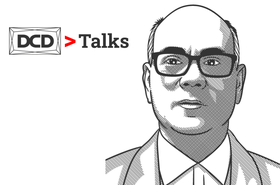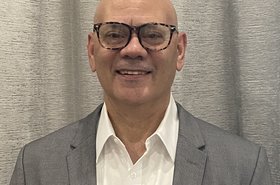The mission-critical data center industry is at a major crossroads. With the current workforce (and knowledge center) approaching retirement, we need a new generation to take their place.
But finding and hiring the right people is proving more challenging than expected.
At our recent DCD>Connect New York event, we got the opportunity to talk to Peter Curtis, CEO of PMC Group I about how we can inspire future talent, and keep our facilities running smoothly.
His interest in the matter began at a very young age. With a brother diagnosed with muscular dystrophy, Curtis found himself having to learn how to operate his brother’s respirator and thus the first Curtis-produced standard operating procedure (SOP) was born.
The SOP dictates how every industry operates, as well as how we keep the work environment safe and effective. And while it is an essential part of the management and operation of data centers, without the skilled workers in place to follow it, it is meaningless.
According to Curtis, to get around this we need to get onto the future workforce’s radar much, much earlier.
“We really need to start to hone and harness these kids. But the challenge that we have is the kids don't know that this industry even exists. So we have to start during grade school,” said Curtis. “When the police and fire first responders are coming in to talk to the grade school kids, we need to talk about being a mission-critical engineer as well.
“By doing that, you gain an interest early on. This industry is so cool that you could choose any subject matter, whether it's electrical engineering, mechanical, accounting, or marketing, it touches all the different industries. So if you want to go to school for marketing, and you want to be in this industry, there's still a place for you.”
The diverse needs of the data center sector make it relevant for a whole variety of skills, but with the vast majority of the global population blissfully unaware of the work that we do, we cannot expect to get the next generation interested.
According to Curtis, this isn’t the only issue. The sheer quantity of knowledge we have acquired over the decades of building this network of digital infrastructure, means that for those looking to get involved, it's like ‘drinking out of a firehose.’
To solve this, PMC Group I has a series of ‘Smart Solutions’.
“It's very logical that the first thing you need to do with smart solutions is use the smart team element to train the next generation engineer to have that knowledge transfer. The next thing you need to do is provide these kids with the right operational tool, which is in this case, the Smart Walk,” explained Curtis.
The Smart Walk is a facilities process management system that combines operational assessments, education, SOPs, AI and other futuristic technologies and handles all the operations.
“You want to train, operate and then visualize – Smart View is that visualization. It's the single pane of glass that brings all disparate software platforms together into one common operating environment. From there, you can add a layer of artificial intelligence above that, based on the required information that your organization needs, whether it be for security, whether it be for operations of your UPS systems, whether it be janitorial: it doesn't matter, information is information, and you need it to provide the right results.”
By combining technology and a skilled workforce, the data centers of the future can continue to run smoothly for many years to come.





